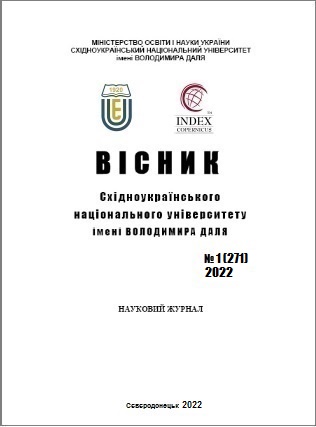Time series analysis using nonlinear dynamics methods
DOI:
https://doi.org/10.33216/1998-7927-2022-271-1-5-10Keywords:
time series analysis, nonlinear dynamics, ordinal network, conditional permutation entropy, global node entropyAbstract
An important component of data mining is the extraction of significant system features using time series data. Most traditional analysis methods focus on time series or frequency domain data. The analysis of nonlinear dynamics is based on the representation of the system in the state space, reflecting the behavior in the n-dimensional space, the axes of which are variable states. Traditional methods of studying diagnostic signs in non-stationary data do not always provide the necessary confidence of diagnosing physiological processes. This leads to the use of additional methods based on the use of an ordinal network and aimed at partition time series into short time intervals during which the physiological system is in stationary conditions. Entropies are complexity measures of ordinal network and indicate the complexity, randomness or uncertainty of the system.
The study was carried out on the implementation of the ordinal network and complexity measures to determine chaotic processes in the time series of these physiological processes, which may indicate pathology processes. The process of transforming time series into an ordinal network is formalized. The implementation of the transformation of the time series of ECG QRS complexes into an ordinal network and the calculation of complexity measures: the conditional permutation entropy and the global node entropy have been performed. The exploatory data analysis of the obtained results of the conditional permutation entropy and the global node entropy based on the visualization of data correlations made it possible to qualitatively evaluate the difference in the conditional permutation entropy and the global node entropy for two types of ECG QRS samples. Statistical significance, determined using the Student's t-test and a p-test value of less than 0.05, indicates that the difference in measure variance for the two types of ECG QRS samples is statistically significant.
Based on the results of the study, a conclusion was made about the feasibility of using an ordinal network and measures for assessing its complexity to determine chaotic processes in clinical data for differential analysis of pathological and normal physiological processes.
References
1. Liu, T., Yao, W., Wu, M., Shi, Z., Wang, J., Ning, X. Multiscale permutation entropy analysis of electrocardiogram. Physica A: Statistical Mechanics and its Applications. – 2017. – Т. 471. – С. 492-498.
2. Yu, H., Liu, J., Cai, L., Wang, J., Cao, Y., Hao, C. Functional brain networks in healthy subjects under acupuncture stimulation: an EEG study based on nonlinear synchronization likelihood analysis. Physica A: Statistical Mechanics and its Applications. – 2017. – Т. 468. – С. 566-577.
3. Mesin, L., Dardanello, D., Rainoldi, A., Boccia, G. Motor unit firing rates and synchronisation affect the fractal dimension of simulated surface electromyogram during isometric/isotonic contraction of vastus lateralis muscle. Medical engineering & physics. – 2016. – Т. 38. – №. 12. – С. 1530-1533.
4. Seely A. J. E., Christou N. V. Multiple organ dysfunction syndrome: exploring the paradigm of complex nonlinear systems. Critical care medicine. – 2000. – Т. 28. – №. 7. – С. 2193-2200.
5. Gao, Z. K., Fang, P. C., Ding, M. S., Jin, N. D. Multivariate weighted complex network analysis for characterizing nonlinear dynamic behavior in two-phase flow. Experimental Thermal and Fluid Science. – 2015. – Т. 60. – С. 157-164.
6. Файнзильберг Л.С. Компьютерная диагностика по фазовому портрету электрокардиограммы / Л.С. Файнзильберг . – К. : Освита Украины, 2013. – 191 с.
7. McCullough, M., Small, M., Iu, H. H. C., Stemler, T. Multiscale ordinal network analysis of human cardiac dynamics. Philosophical Transactions of the Royal Society A: Mathematical, Physical and Engineering Sciences. – 2017. – Т. 375. – №. 2096. – С. 20160292.
8. Kang H., Zhang X. The influence of parameter selection for Rényi phase permutation entropy on abnormal change detection. 2019 IEEE International Conference on Signal, Information and Data Processing (ICSIDP). – IEEE, 2019. – С. 1-6.
9. Sun, Q., Wang, Q., Ji, B., Wu, W., Huang, W., Wang, C. The Cardiodynamicsgram Based Early Detection of Myocardial Ischemia Using the Lempel-Ziv Complexity. IEEE Access. – 2020. – Т. 8. – С. 207894-207904.
10. Scarciglia, A., Catrambone, V., Bonanno, C., Valenza, G. Quantifying partition-based Kolmogorov-Sinai Entropy on Heart Rate Variability: a young vs. elderly study. 2021 43rd Annual International Conference of the IEEE Engineering in Medicine & Biology Society (EMBC). – IEEE, 2021. – С. 5469-5472.
11. Майоров О. Ю., Фенченко В. H. Повышение надежности исследований детерминированного хаоса в биоэлектрической активности (ЭЭГ, ЭКГ и вариабельности сердечного ритма) методами нелинейного анализа. Клиническая информатика и телемедицина. – 2009. – №. 5, Вип. 6. – С. 10-17.
12. Bandt C., Pompe B. Permutation entropy: a natural complexity measure for time series. Physical review letters. – 2002. – Т. 88. – №. 17. – С. 174102.
13. Unakafov A. M., Keller K. Conditional entropy of ordinal patterns. Physica D: Nonlinear Phenomena. – 2014. – Т. 269. – С. 94-102.
14. Chen Y., Hao, Y., Rakthanmanon T., Zakaria J., Hu B., Keogh E. A general framework for never-ending learning from time series streams. Data mining and knowledge discovery. – 2015. – Т. 29. – №. 6. – С. 1622-1664.

